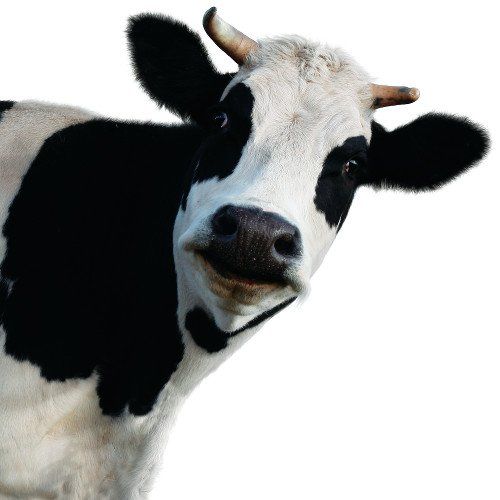Micellar Casein, Grass Fed, and Whey Hydrolysates Continue to Trend in Dairy Market, Say IFT 2017 Firms
Firms talk about trends gaining in the dairy market.
Photo © iStockphoto.com/mihtiander

Micellar casein, grass-fed cows, and hydrolysates are still some of the trendiest topics within dairy ingredients, said representatives from the U.S. Dairy Export Council (USDEC; Arlington, VA) and whey-ingredient supplier Arla Foods Ingredients (Viby J, Denmark) at this year’s Institute of Food Technologists (IFT) Annual Meeting and Food Expo.
Micellar Casein
Micellar casein is a recent achievement in dairy protein processing. Through ultrafiltration, or microfiltration, micellar casein is created as a dairy protein that combines the benefits of slow-digesting casein protein and fast-digesting whey protein.
“Micellar casein is a really great ingredient because you get the benefits of the milk protein and the whey protein,” said Terri Rexroat, USDEC’s vice president, U.S. trade services, global marketing, at IFT. “It’s a great ingredient that’s really versatile and carries a lot of really optimal properties of milk.”
She also pointed to micellar casein’s high solubility as a benefit to formulators. “In a lot of applications-like infant formula, for example-they need to add separate minerals like magnesium and calcium to meet the mineral nutrition requirements.” When added separately, she said, these ingredients can result in a protein ingredient that’s fairly insoluble. By contrast, she said, micellar casein is “protein in its native form that comes in the milk” and contains all of the minerals inherent in milk, with no separate nutrient additions required. As a result, she said, micellar casein “is a very soluble ingredient that’s easy to work with.” Not only that, she said, but unlike a dairy protein like caseinates, which can contain off-notes, micellar casein’s flavor is smooth and clean.
Consumers awareness of micellar casein is still growing, said Rexroat, even though it’s “been out there for a few years.” Some consumers assume that micellar casein will always be a more expensive protein option-something that Rexroat says isn’t necessarily true.
“The price isn’t necessarily going to be higher than a milk protein isolate,” she said. “[The price is] going to vary by processor, so someone who is interested in micellar casein should look at all the processors that are out there and talk to each one” about pricing, Rexroat said, noting that there are currently about four or five micellar casein suppliers in the United States.
Grass-Fed Dairy
Grass-fed dairy products also continue to trend, although some consumers may be misled by some of the messaging grass-fed claims imply, Rexroat said.
Currently, said Rexroat, U.S. supply of grass-fed dairy products is still limited-a fact that has given international dairy-producing countries like New Zealand that do specialize in grass-fed a competitive leg up. Rexroat, however, cautioned that consumers need to understand all of the facts behind grass-fed claims, including clearing up any misconceptions that might lead one to think that grass-fed ingredients are superior to non-grass-fed.
“I think of it kind of like gluten-free, where there are some marketing messages that are not necessarily fact-based about grass-fed,” she said. “New Zealand and Ireland have some pretty strong messaging around how their cows are eating grass all year round and how they think that that helps the functionality of the milk, and that there are feeds that might contain antibiotics.” But this, she said, is a “fallacy” and that all non-grass-fed cows in the U.S. produce milk that is antibiotic-free because the law demands antibiotic-free milk.
“And so,” she said, “some of those grass-fed messages you have to really, really dissect to understand what the facts are. I’m not anti-grass-fed, but you just need to make sure that the story is clear.”
Dairy Hydrolysates
Over at the Arla Foods Ingredients booth at IFT, Ulrik Pedersen, general manager, North America, said that he expects to see a lot of activity in whey hydrolysates in the coming years.
The company introduced its Lacprodan Hydro.365 brand of whey protein hydrolysate about five years ago as a sports nutrition ingredient that is quickly absorbed to aid in faster recovery post-exercise. Since then, the company has added a range of other hydrolysates to its Lacprodan Hydro line. Still, Pedersen said, marketers and consumers are still learning about what whey hydrolysates are.
“It’s still a little bit unknown in the market, and I think a lot of customers are trying to figure out how to use hydrolysates in a better way,” he said. One thing that will boost understanding is the research now being done on how hydrolysates are absorbed more quickly by the body, he said. “I’m very sure that with more clinical studies and research, it becomes clearer why you should use hydrolysates,” even if whey hydrolysates might be higher priced than, say, whey protein isolates, he said.
Pedersen said he expects whey protein hydrolysates to gain more traction. “It was a little bit of a buzz already last year, and it’s quieted off a little, but I think it’s going to grow very soon,” he said.
Also read:
Dairy Protein Advancements: Microfiltration, Sustainability, and MoreWhich Flavors Work Best for Dairy Protein versus Plant Protein?
Prinova acquires Aplinova to further increase its footprint in Latin America
April 7th 2025Prinova has recently announced the acquisition of Brazilian ingredients distributor Aplinova, which is a provider of specialty ingredients for a range of market segments that include food, beverage, supplements, and personal care.










